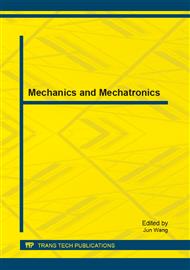p.533
p.543
p.550
p.555
p.563
p.570
p.576
p.581
p.587
Peudo Static Test Research for Seismic Shear Keys of Bridge
Abstract:
To investigate seismic performance of lateral bridge shear keys with different stirrup types, depths and impact degrees, tests in low frequency cyclic load have been done for 5 lateral shear keys. The results show that unbind stirrup shear key adopted is obviously weaker than bind one in terms of ductility ability; when bind one is adopted, it is mainly characterized by bending shear failure mode, its bearing capacity increases with depth. Finally a computational formula for seismic capacity of shear keys is presented according to its failure mechanism.
Info:
Periodical:
Pages:
563-569
Citation:
Online since:
October 2013
Authors:
Keywords:
Price:
Сopyright:
© 2013 Trans Tech Publications Ltd. All Rights Reserved
Share:
Citation:


